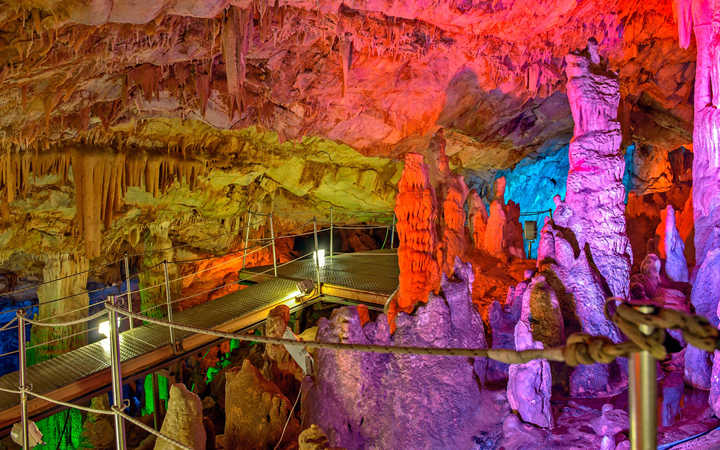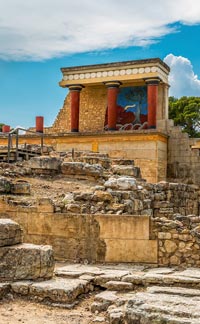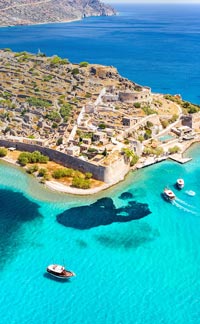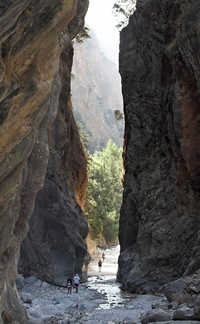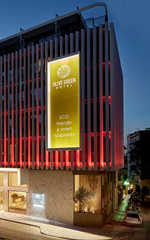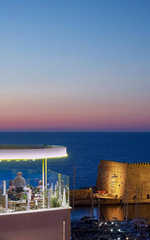Crete is home to half of Greece's caves (there are 5,200 on the island) because her geology permits it. Limestone, which is common throughout Crete and is the chief compositional element of the mountains, is a relatively soft rock rich in minerals and subject to the slow leaching of those minerals into the incredible stalactites and stalagmites of the "Sfentoni Hole," as the locals have called it for millennia. Better known to the wider world as Sfentoni Cave, it is one of only 3 caves on the island open to the public.
Sfentoni Cave is near the village of Zoniana, in the center of northern Crete, about 45 km west of Heraklion by road (27 km in a straight line). A village inhabited by fiercely independent mountain people who've skirted the law for centuries, Zoniana is an interesting place all of itself. In 2008 there was a gun battle between Greek police and local shepherds who were growing marijuana in the surrounding mountain wilderness and shipping it all over Europe. The application of additional law enforcement brought things under control, but many people look at this kind of activity as being consistent with the character of the village, which was often in rebellion against governing authorities, such as the occupying Turks and, later, the Nazis.
The cave entrance, which is fairly narrow, is on the steep face of a mountain, 100 meters above the highway. A narrow road has been carved into the upgrade, which, after a switchback, empties you out onto the parking lot. From there a wide, stone-paved path goes to the cave entrance, giving you, along the walk, a beautiful panorama of the surrounding hills and mountains. You are not allowed to visit the cave unaccompanied by a guide. Before the guided tours, visitors would chip off pieces of particularly interesting stalactite and stalagmite formations as souvenirs. The entrance fee is €4 and includes the guide, a local who has been familiar with the cave most of his life.
The cave is well, and sometimes eerily lit, in various colors which shift through the spectrum from indigo, magenta, green, and golden yellow. The path through it is often augmented by cleated metal ramps bordered by guide ropes. The walk is nearly 300 meters, and the formations are fantastic.
In places where the cave is low-ceilinged, the stalactites and stalagmites have grown together into fat, hourglass-shaped columns with surfaces like melted wax on long-burning candles. Other formations resemble nature's sculpture, all with the smooth edges made by the slow accretion of mineral deposited by dripping water. They shine under the lights because of the calcium carbonate crystals in the rocks. Locals used to believe the reason they shone was because fairies had sprinkled glitter on them.
The cave is home to a colony of about 400 bats, who hang suspended from the roof, wrapped in their wings and waiting for nightfall when they leave the cave to eat their own body weight in insects.
The cave's chambers have colorful, interesting names, such as the Chapel, where the formations resemble that of a pipe organ, the Metropolis, and the Chamber of the Lost Child, where the calcified bones of a child who died in the cave nearly a thousand years ago were found.
The cave was often used as a hideout by brigands and fugitives. Neolithic tools and pots have been found there. Local villagers would store their cheese there and let it mature, also. They called it the "cheese of the hole."
